Bejewel Your Body: The Ultimate Dermal Piercing Guide
Curious about dermal piercings? Glide through our friendly guide and be ready to shine from every angle.
On Sep 20, 2023 – 12 minutes read
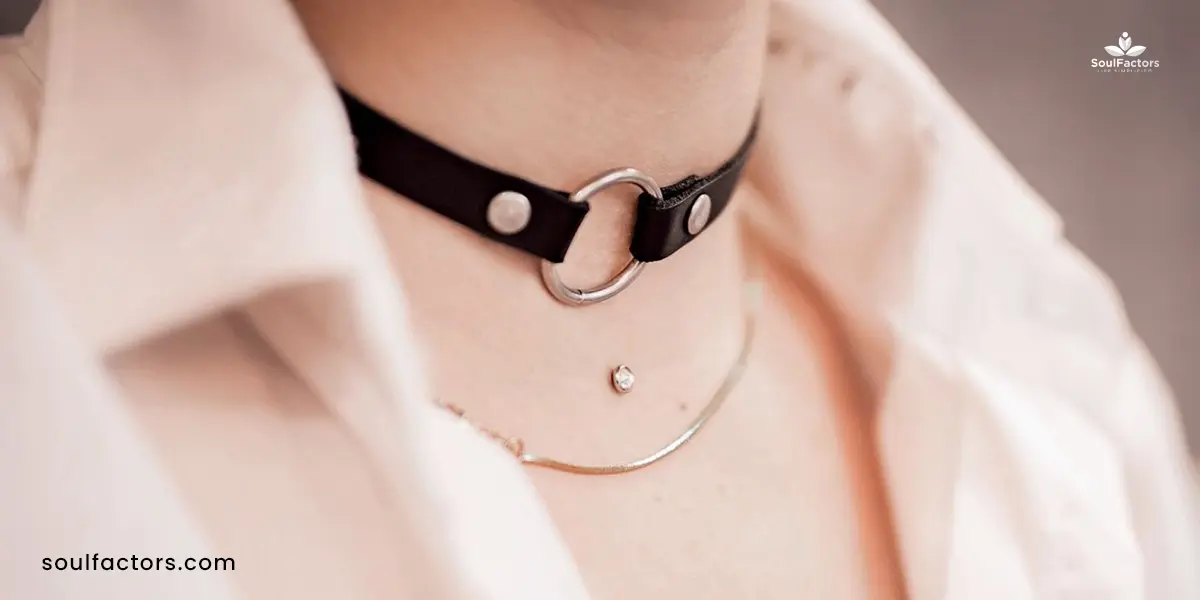
Do you feel that there is a whole world of body modifications waiting to be explored when it comes to expressing oneself? If you haven’t heard of dermal piercing, you’re missing out. It is more than just a piercing- it can also be a tiny, sparkly friend for your skin! We are about to have a cozy chat about this unique type of piercing and clear up all those curious questions you might have regarding dermal piercing So, stick around if you are considering adding a pinch of shimmer to your look.
What Is A Dermal Piercing?
Dermal piercing is often referred to as microdermal piercing. It is a semi-permanent body modification and is very different from traditional piercings that go in and out of our skin. They involve inserting jewelry directly into the dermis layer of the skin. Now, do you have any guesses on what the result would be? A single, sparkly stone or charm that appears to be embedded in the skin! It is like wearing your jewel without a visible starting or exit point.
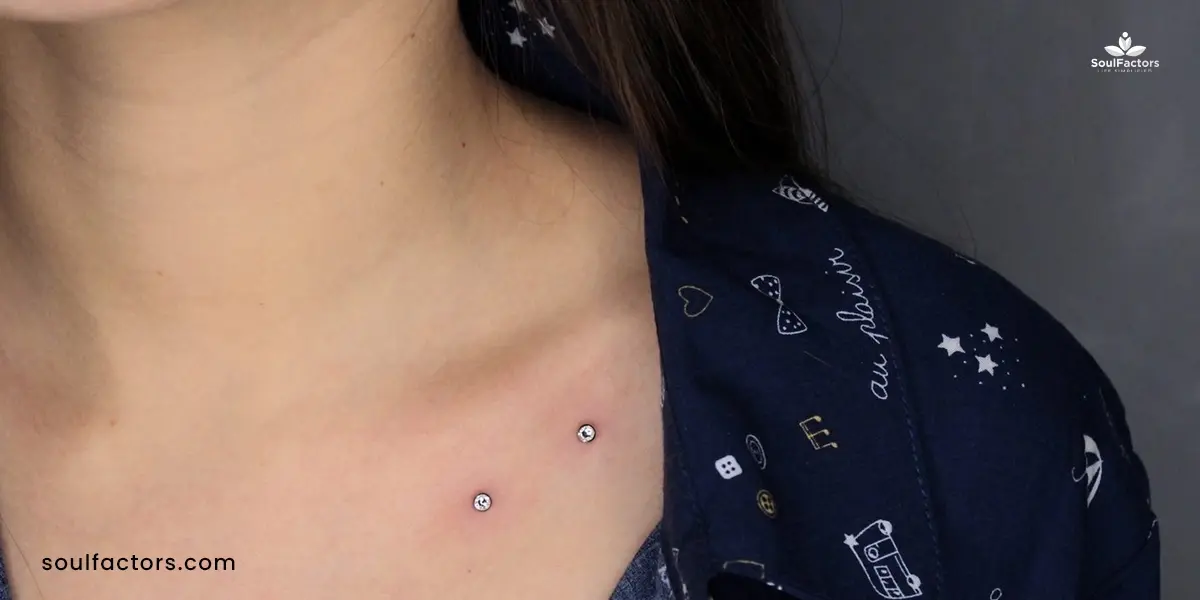
What Is The Difference Between Dermal And Surface Piercing?
Let’s see how a dermal piercing is different from a surface piercing.
Dermal Piercings
Dermal piercings bring their own kind of magic to the table.
👉 Design & Positioning: Instead of the usual in-and-out style we see in traditional piercings, these little gems settle into the dermis layer of the skin. This means that there will be a singular, visible point on your skin’s surface- it avoids the tunnel-like structure of traditional piercings.
👉 Jewelry Type: Dermal piercings use what is known as a dermal anchor or ‘base plate’. This is the part that’s placed into the skin. The jewelry tops can range from gemstones to other decorative pieces, and they are then screwed into this anchor. This gives us a variety of customization options.
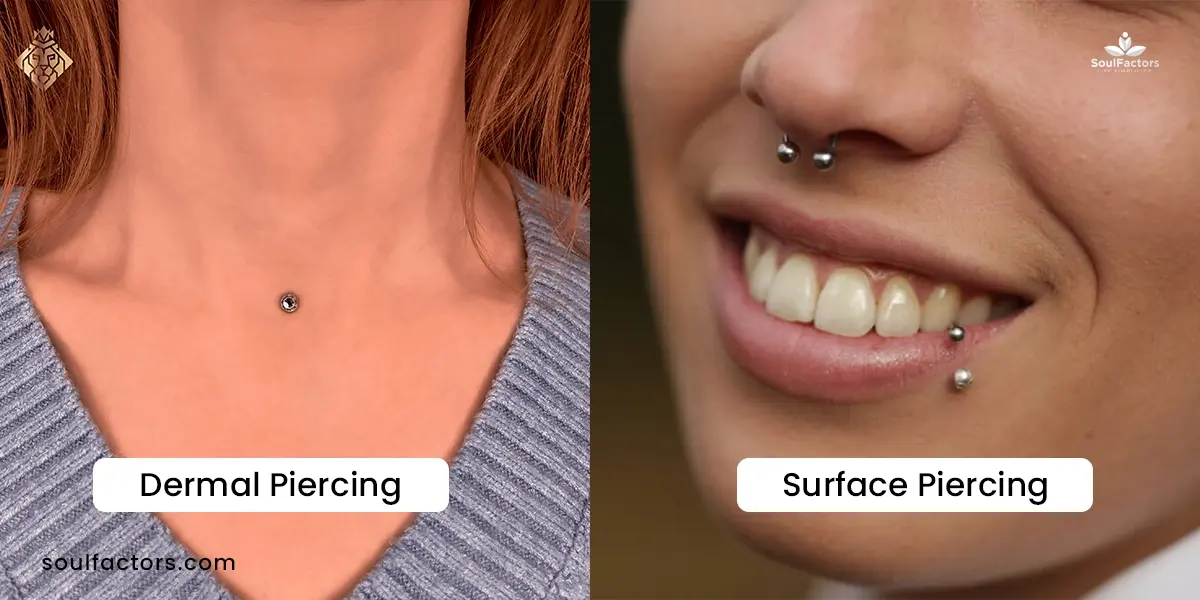
👉 Appearance: Dermal piercings give the illusion that the jewelry is emerging directly from our skin. There is no obvious entry or exit point, and that is the twist! It offers a unique and often more minimalist aesthetic and appears as though a gem or charm is embedded directly in the skin.
👉 Healing Process: Dermal piercings are generally considered more stable than surface ones because of their design. The anchor system provides a secure foundation too. However, just like any piercing, they too come with potential complications such as infection or migration. Proper aftercare is crucial to ensure they stay looking fab and feeling great!
Surface Piercings
Ever wondered about those piercings that seem to play peek-a-boo with the skin? Like the long-standing eyebrow piercings and conch piercings?
👉 Design & Positioning: These piercings involve jewelry that travels underneath a small section of the skin and re-emerges at another point. This means the piercing tunnels through the skin. This can create a curved or straight trajectory depending on its placement.
👉 Jewelry Type: Surface typically piercings use a surface bar. This bar is shaped much like a staple- this is what makes it flexible and accommodating to the body’s natural movements. Do you know what could be the perk of this kind of design? It minimizes irritation and reduces the chances of the body rejecting the piercing.
👉 Appearance: The only visible parts of the piercing after it is healed are the two ends of the bar. This creates an elegant floating jewelry effect on the skin and adds a subtle yet eye-catching aesthetic.
👉 Healing Process: We should tell you that these piercings tend to be a bit tricky. They have a higher rate of rejection, which means the body might consider the jewelry a foreign object and attempt to push it out (1). This can lead to migration or even piercing rejection. So, what can we do? Aftercare and following the piercer’s advice closely can mitigate such risks.
Where Does A Dermal Piercing Go?
Dermal piercings are loved for their versatility! They offer a range of placement options that can be customized to individual preferences and styles. Let us talk about some of the popular spots.
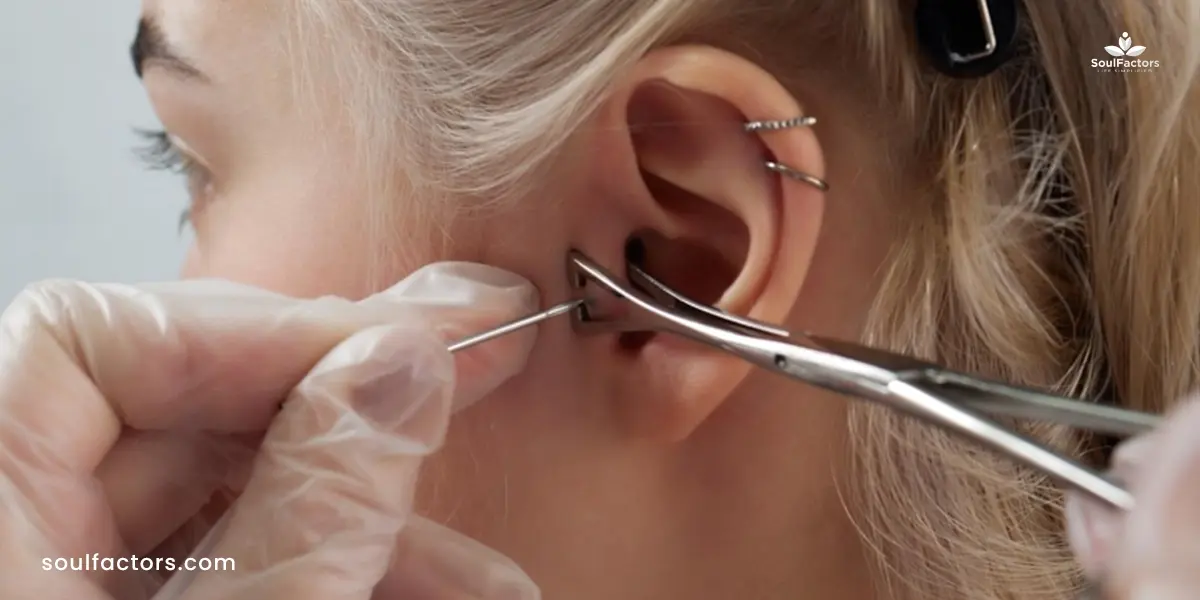
👉 Dermal Piercing Chest
This is a subtle yet captivating placement. We see it often positioned just above the heart or around the collarbone.
- Aesthetic Appeal: It accentuates the low neckline and draws our attention to the collarbone and upper chest. We tell you this- the glimmer from the jewelry in this spot can be both elegant and edgy.
- Considerations: It might be slightly more painful than other spots given the sensitivity of this area, but the end result is undeniably stunning.
👉 Dermal Piercing Back
These are commonly placed along the spine mostly in pairs or more to create a line or pattern.
- Aesthetic Appeal: They can give a symmetric, almost spine-tingling appeal, especially when you carry them with backless dresses or tops.
- Considerations: Aftercare for a dermal piercing back is crucial since this area often comes in contact with clothing and bedsheets. Don’t ever forget regular cleaning. Also, ensure minimal friction during the healing process.
👉 Dermal Piercing Face
The most popular positions for dermal piercing on the face are the cheek or high cheekbone area.
- Aesthetic Appeal: They can provide an ethereal, fairy-like touch, emphasizing facial features and adding sparkle to the face.
- Considerations: Due to its visibility, selecting the right jewelry that complements one’s features and style is essential for a dermal piercing face.
👉 Dermal Piercing Under Eye
We also call them teardrop piercings. Do you know why? They are placed right below the eye like it resembles a precious tear!
- Aesthetic Appeal: This unique placement of dermal piercing under eye offers an emotive touch. Dermal piercing lovers pair it with the right jewelry. Trust us, it can be incredibly enchanting!
- Considerations: The skin under the eyes is delicate. So just make sure the piercer is experienced and using the right aftercare products can help reduce risks.
👉 Dermal Piercing Neck
Dermal piercings on the neck are generally positioned on the nape or the side of the neck.
- Aesthetic Appeal: People just go for a dermal piercing neck because it is a statement piece that can be easily concealed if needed.
- Considerations: Hair, especially long hair, can sometimes catch onto this jewelry. We would advise being cautious when combing or letting hair down.
How Are Dermal Piercings Done?
Dermal piercings are a specialized procedure that requires precision, expertise, and knowledge. Let us make it simpler for you to understand.
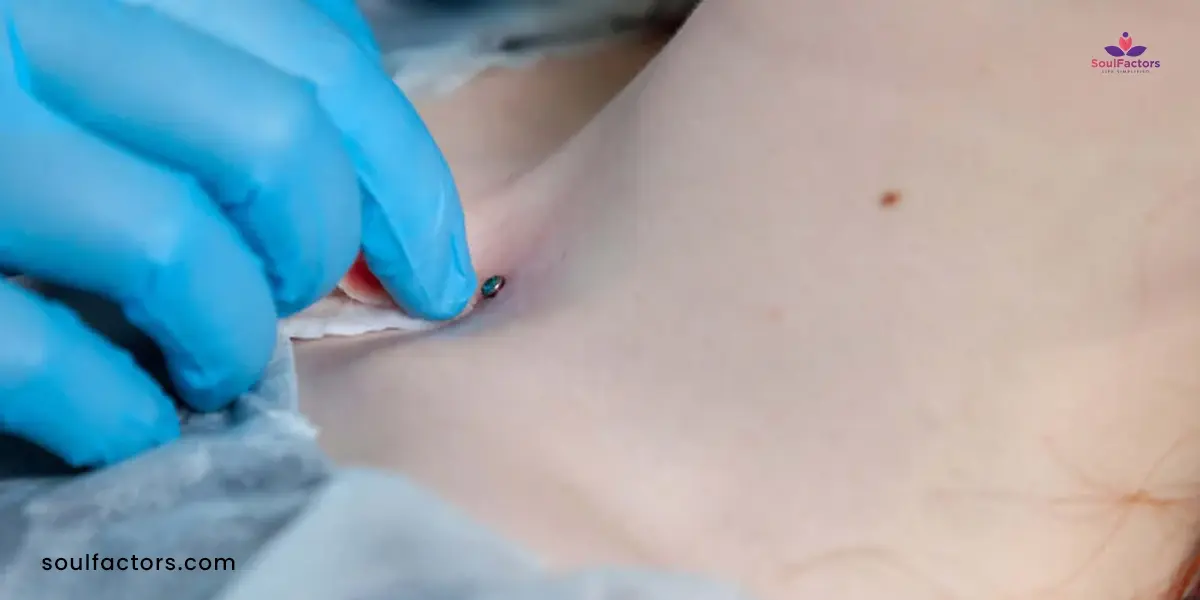
Dermal Piercing Steps
Getting a dermal piercing involves the following basic steps:
👉 Dermal Punching Procedure:
Professional piercers often opt for a dermal punch rather than a traditional needle to create the perfect spot for the piercing. This method removes a small piece of skin to make space for the jewelry.
Some people compare the sensation to a quick pinch or a slight sting. The pain is typically brief- it subsides shortly after the procedure. However, the area might remain tender for a few days post-piercing.
👉 Insertion of the Dermal Anchor:
The piercer will carefully insert the dermal anchor once the hole is made. This anchor is typically made of hypoallergenic materials like surgical steel or titanium to reduce the chances of allergic reactions or complications.
👉 Attaching the Decorative Top:
They screw a decorative top onto the anchor after ensuring that it is secure- it can be a gem, bead, or some other design. This piece sits flush against the skin. It offers a unique floating jewelry kind of look.
Will it Hurt?
Any immediate pain from the initial puncture will subside by now. Screwing on the decorative top is usually painless. However, it is essential to ensure the area isn’t unnecessarily agitated during this step.
Cleaning and Care
The decorative top too requires care just like the anchor. Dirt and bacteria can gather around it (2). You should clean it regularly with a saline solution and ensure the top is secure without over-tightening. This will help maintain its appearance and health.
How Long Does It Take to Heal?
We assume that by now you are all curious about how long it will take for that shiny new dermal piercing to heal. Let’s talk about it right away.
Healing Duration
Most dermal piercings start to feel better within 1 to 3 months. That’s the outer healing for you! The surface might seem all good to go in a few months, but the deeper layers can take sometimes up to 6 months or more to heal. Just remember to be patient and treat your piercing with care.
What Can Affect Your Healing Time?
Just like our taste in music or food, our healing rates can differ. Some of us are just quick healers, while others like to take it slow and steady.
👉 Location: The spot you choose for your dermal piercing can have a say in healing time. Some spots, especially those that clothes love to rub against, might be a tad bit fussier.
👉 Aftercare’s Big Role: How you care for your piercing makes a HUGE difference. It is like taking care of a plant- give it the right care, and it will flourish.
Some Aftercare Tips From Us
👉 Cleaning: A gentle cleanse with saline solution twice a day should do the trick. And, as tempting as it might be, try to skip the alcohol or hydrogen peroxide- they are like party crashers for the healing process.
👉 Hands Off: We understand that new piercings are exciting! But try to resist the urge to touch. It is like baking- you shouldn’t peek until it is done!
👉 Dress Smart: Watch out for those sneaky clothes that might catch onto your dermal piercing. A little caution can save a lot of trouble.
How Long Will a Healed Piercing Last?
If you are wondering, “How long will this beauty last?” Let us break it down for you.
- Basic Math: Good care and ideal placement means longer-lasting piercing. It is as simple as that!
- Duration Spectrum: Dermal piercings can be your skin’s companion anywhere from 6 months to several glorious years. But keep in mind that it is not a lifetime guarantee- you can think of it as a temporary sparkle tattoo.
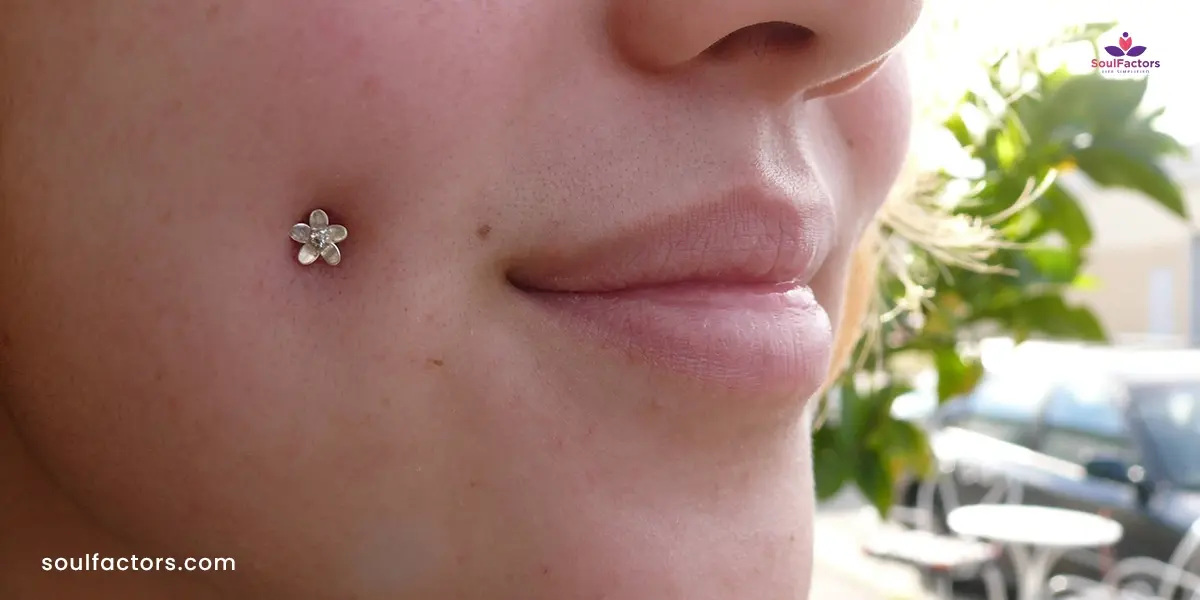
- Natural Body Response: Our bodies are like overprotective parents sometimes. Introduce something new like a piercing and it might go, “Who’s this?” and try to push it out. Don’t worry, it is just our body’s natural tendency to be wary of foreign objects.
- Possible Rejection: Over time, your body might decide to play the “Not in my house!” card and start pushing the piercing toward the skin’s surface. It is quite disappointing, but it happens. Keep an eye out for signs like redness, itching, or the jewelry becoming more visible.
- TLC: Treat your piercing like it is the crown jewel! Regular cleaning, avoiding unnecessary tugging, and being gentle can make a world of difference for your dermal piercing.
- Expert Advice: Regular check-ins with your piercer can help too. They are like the piercing whisperers who know what’s best for your shimmering buddy.
- Listen to Your Body: If something feels off, it probably is. It is always best to consult with a professional if you notice any changes or discomfort.
How Much Is A Dermal Piercing?
So, you’re considering taking the leap into the world of dermal piercings? Great choice! But it is always a good idea to get a handle on potential costs first as with any stylish endeavor.
- Location Matters: Just as some cities have pricier lattes or movie tickets, the cost of a dermal piercing can vary depending on where you are located. Studios in bustling urban centers might charge a bit more than their counterparts in smaller towns.
- Studio Reputation: Expertise matters greatly when it comes to putting a piece of jewelry on your skin. Renowned studios with experienced piercers might set their prices a touch higher, but that often means you are in very skilled hands.
- Jewelry Choice: Think of it like choosing between a classic watch and one studded with crystals. Opting for higher-end materials or intricate designs can increase the price.
When we consider these factors, your investment might range from $50 to $100 or possibly a bit more. But remember, it is not just about the cost- it is about a unique expression of you.
What Types of Jewelry Are Used For This Piercing?
You will be in for a treat if you are venturing into the world of dermal piercings. Dermal tops offer a range of designs, from simple titanium discs for a minimalist touch to dazzling gem-studded pieces for a bit of sparkle. There is likely a perfect match for you regardless of the style you are looking for.
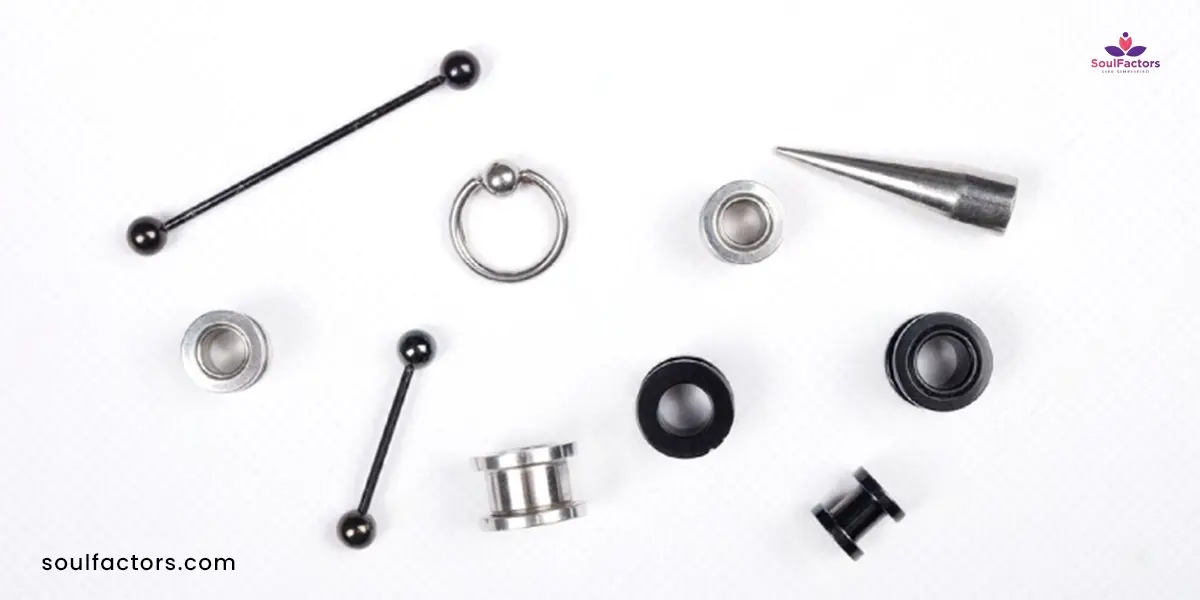
Don’t forget about the anchor, the sturdy base of your piercing: It is typically made of reliable materials like surgical-grade titanium or stainless steel to ensure longevity and comfort.
How To Remove A Dermal Piercing?
Thinking about switching things up or saying goodbye to your dermal piercing? Here is the golden rule: always consult a professional. Why, you ask? We’ll tell you.
- Safety First: Dermal piercings are not like your typical earrings. Their unique design requires expertise for removal to avoid any damage to the skin.
- Gentle Touch: Professionals have the right tools and techniques. They will carefully lift the jewelry’s top and make sure that no extreme pressure is put on the surrounding skin.
- The Base Matters: The expert will grip the base with precision and skill after removing the top to ensure a smooth unscrewing process.
Always remember- DIY might sound fun, but it’s best to leave the job to experts when it comes to dermal piercings.
What Risks Are Associated With This Piercing?
Now, we are with the age-old question when considering a new piercing- “What could possibly go wrong?” While dermal piercings can add that extra sparkle and edge to your appearance, it is good to know about the potential risks that may come with it. Let’s go.
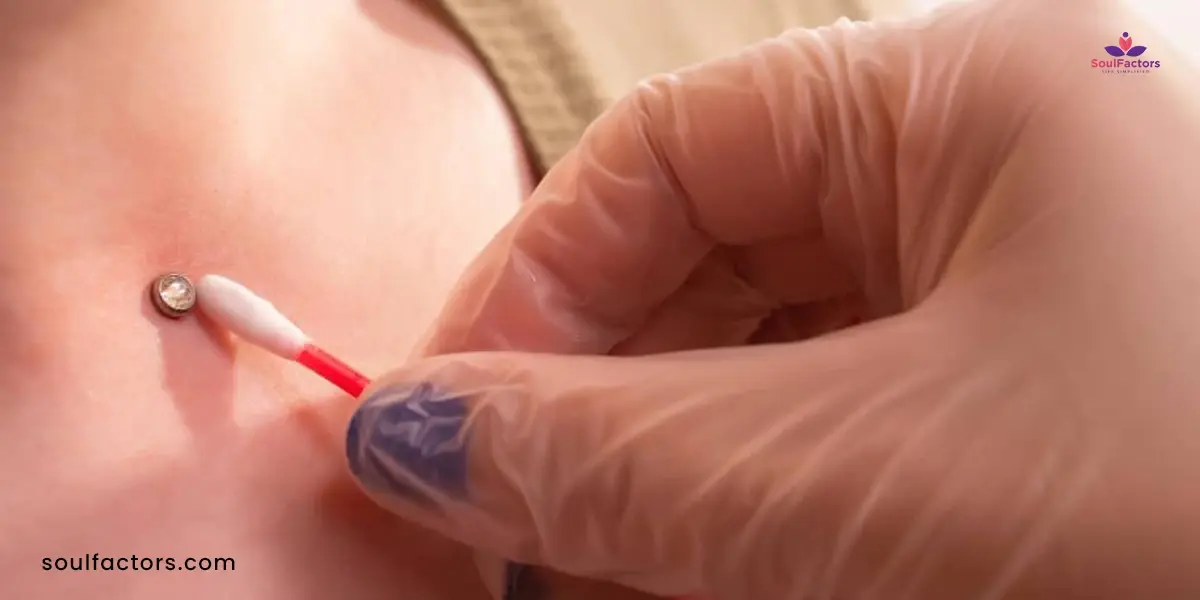
- Risk of Rejection: Our bodies are pretty incredible and sometimes a bit overprotective. Just like that overzealous bouncer at a club, your body might decide the dermal anchor isn’t on the guest list and try to push it out. This phenomenon is called rejection and it can cause the piercing to migrate from its original spot.
- Scarring: There might be a little reminder left behind in the form of a scar when you remove the piercing. The severity often depends on how your skin heals and the care you provide during the healing process (3).
- Infection Watch: Cleanliness is your new best friend! Just as with any piercing, there is a chance of an infection if you don’t keep the area clean and free from irritants. Always follow the aftercare instructions of your piercer and be observant of any unusual changes.
Before We Wind Up!
Dermal piercings offer a unique blend of subtlety and edginess that frenulum piercings or tongue piercings cannot quite achieve. Whether you are considering a dermal piercing chest piece or an under-eye sparkle, you shouldn’t skip understanding the process, risks, and aftercare. As always, prioritize safety, choose a reputable professional, and embrace this stylish body art form with confidence and flair!
FAQ
Consider placement, personal healing speed, jewelry material, and professional piercer’s expertise.
You can opt for smaller tops like a subtle gem or flat disc for a comfortable initial experience.
Avoid direct pressure on fresh piercings. Consider your sleeping habits and maybe get a travel pillow to help.

Subscribe to Newsletter
Elevate your routine, stay on trend, and embrace a personalized beauty journey with our curated insights.

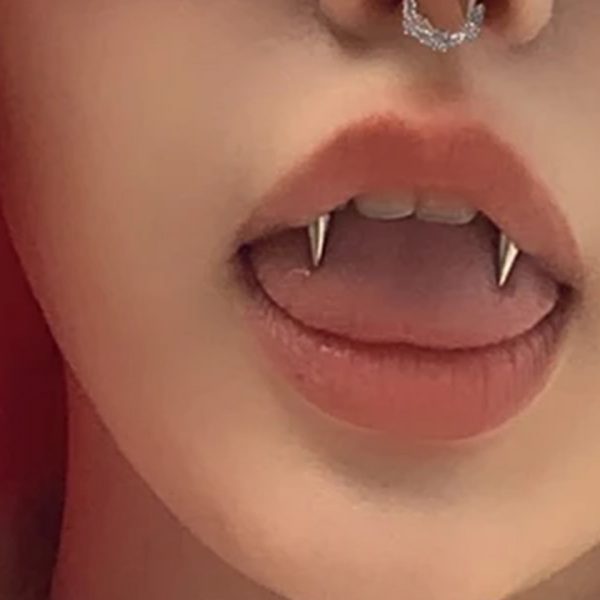
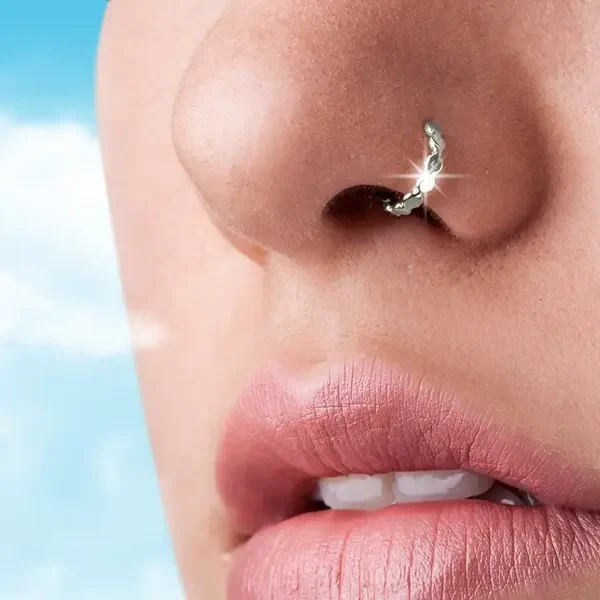

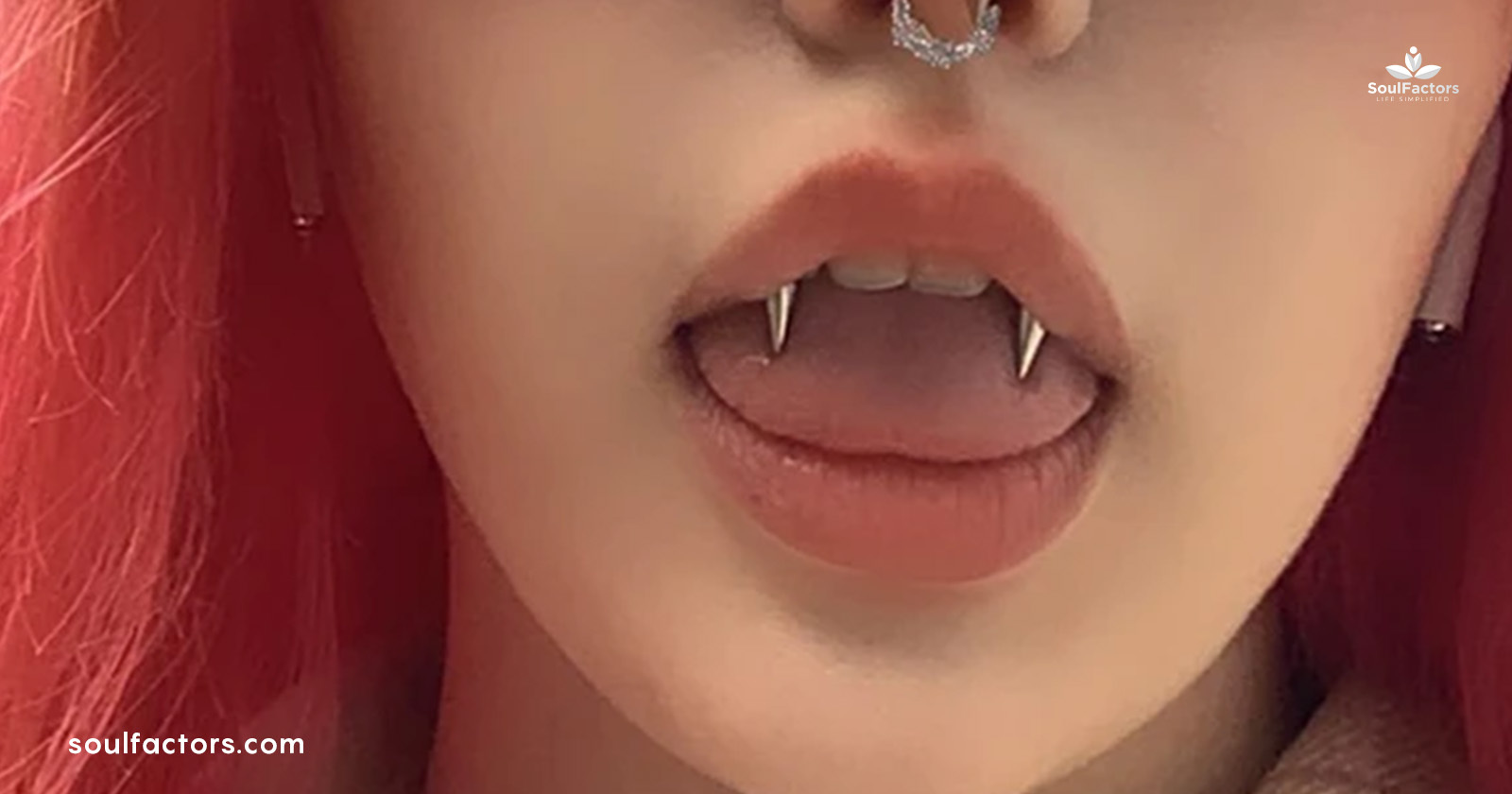
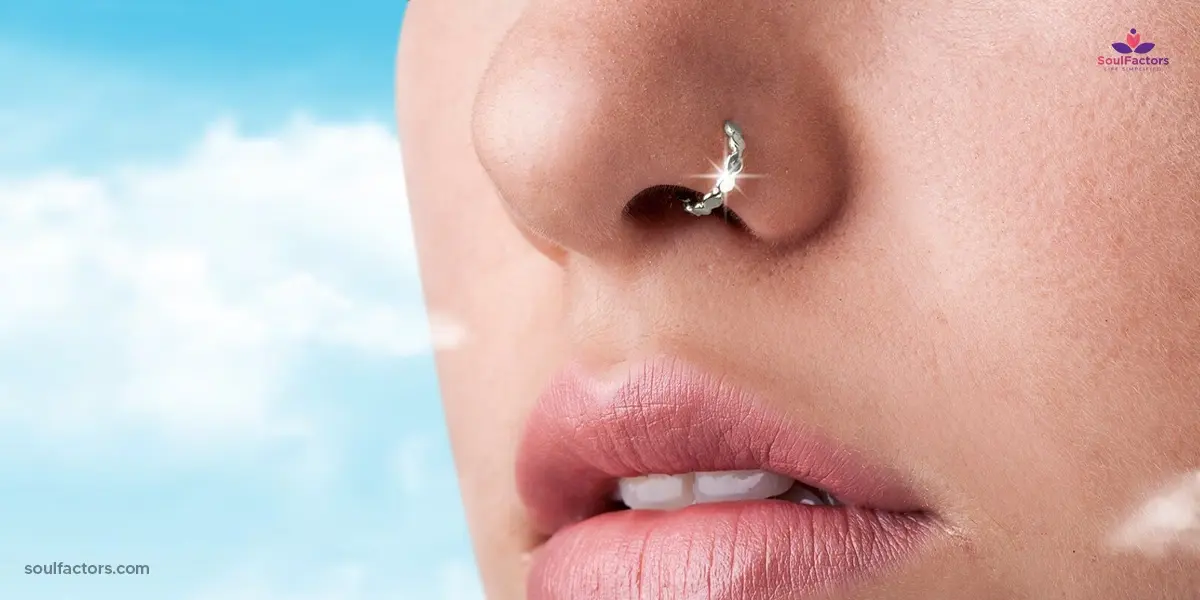
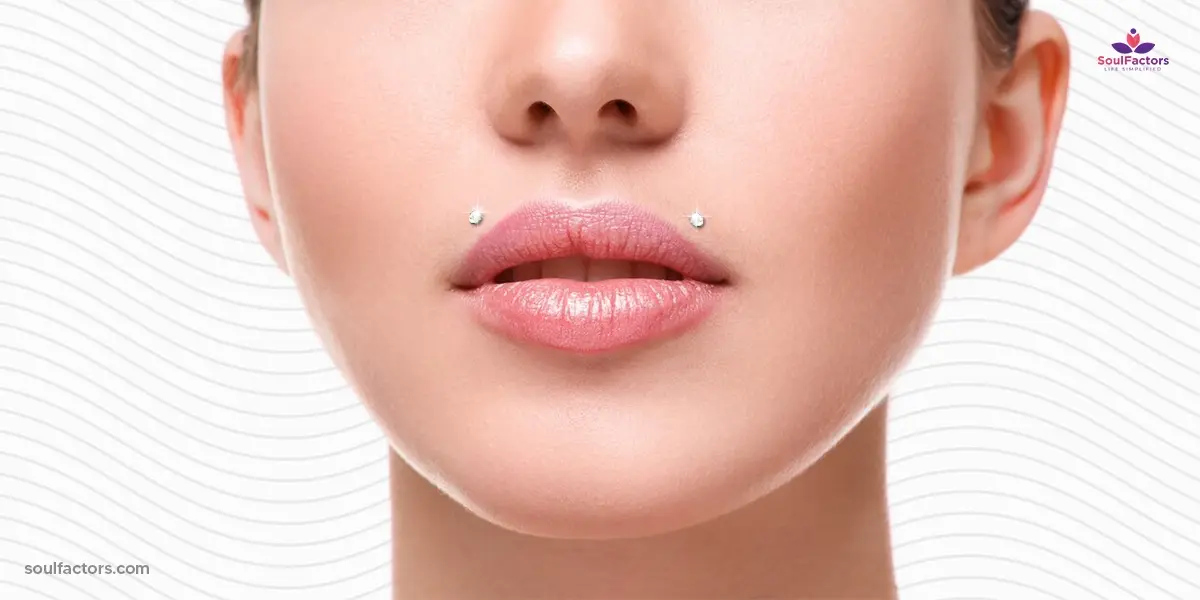
Write a Comment